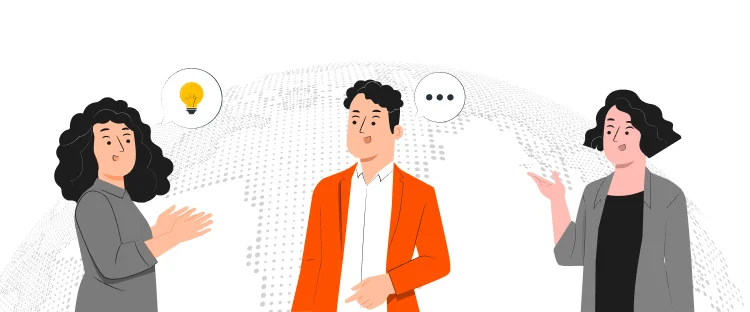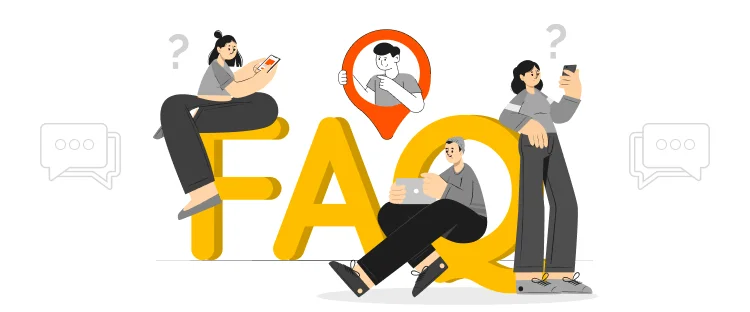The world is on the brink of some major changes. And as the world shifts from its old ways to embrace new ways of technology, the quest to learn new languages is also increasing. One of the languages that has been an all-time favorite of many people across the world is also a language that is considered the most “romantic” language.
Considered as a “soft” language and having a large population who speaks this language, Spanish is one of the emerging languages of the future. And when it comes to learning the Spanish language, one needs to have a thorough knowledge about this language, along with a support of a reliable agency which can deliver professional Spanish translation services.
Gaining knowledge about the Spanish language sure is fun, as this Roman language has some really interesting facts that may come as a surprise to many.
That’s right. Spanish is the world’s 2nd most spoken language with approximately 329 million native speakers, surpassing English and lagging only behind Chinese, which is the world’s most spoken language with 1.3 billion speakers. Perhaps this popularity is due to the large number of Spanish migrants who made their journeys across the European region, spreading their language as they went. More importantly, the vast number of people willing to learn this language is an indication of its widespread popularity across the world.
Few languages are inspired by other languages, but Spanish is inspired by Arabic languages. In 711, when Arabic armies conquered the Iberian Peninsula, they brought Arabic art, architecture and language with them. Later, when they were expelled from the region, the local language retained some 8000 Arabic words, parts of which you can still hear today. For example, when you visit Spanish historic site, you might come across a site named in Arabic—El Alhambra.
The World Wide Web may have its own statistics when it comes to languages, but interestingly enough, Spanish is used by almost 7.9% of people on the internet, making it the 3rd most popular language of the internet users. Not only that, Spanish is the 2nd most widely used language on Facebook and Twitter after English—which makes it an ideal language to learn.
It is common knowledge that Mexico is the main hub of Spanish language, with approximately 114 million Spanish speaking population residing in the region. With so much people fluent in Spanish, who would want to miss out on learning Spanish—provided there’s a Spanish translation services at one’s disposal.
This is one other thing that sets Spanish apart from other languages, especially English. Unlike English, Spanish has inverted exclamation and question marks (think upside down). This makes Spanish a fun language to learn. For example, Juan como estas¿, (Juan how are you?)
While the English language has only 3 tenses, the Spanish language has an astonishing number of 17 tenses. And while the English language only has one past, present and future tense to describe words, the Spanish language has multiple past, present, and future tenses for its verbs (Indicative, Subjunctive, and Imperative). Likewise, the verbs used in Spanish language differ from those used in the English language.
Now it may come as a surprise to many, but English and Spanish both share the same language family—the Indo-European languages. Other languages belonging to this family are French, Scandinavian, German, and Slavic languages. This is the reason speakers of the English language find it easy and simple to learn Spanish language, as many of the former’s words are retained by the latter.
Sounds strange, right? The Spanish language is overlooked and regulated by the “Royal Spanish Academy”, which was established in the 18th century and is considered as the arbiter of the Spanish language. Responsible for developing the Spanish dictionary and grammar guides, the Academy promotes reforms related to the language, including the inverted exclamation and question mark.
Ever wondered what makes Spanish such a “fun” language to learn? The reason is simple. Spanish is a “phonetic” language—each letter of Spanish alphabet represents a certain sound. This means that if you know how a letter is spelled, you can always pronounce it. This makes Spanish an easy language to learn and speak. The only exception are the words of foreign origin, as they usually retain the original spelling.
Everybody knows that the Spanish language is a descendent of Latin—which is why the majority of Spanish speakers reside in Latin America. Although there are some minor differences in grammar, vocabulary and usage of the Spanish in Latin America and Europe, it does not affect communication much. You can consider these differences as those between American and British English.
The Spanish language, together with its tenses, vocabulary and different phonetic words is one of the most popular languages to learn. As the world progresses on to learn new languages, speakers of this Latin language are growing steadily. If you are an individual seeking to learn this “soft” language, chances are you will have a good time learning it, as it is also one of the easiest and simplest languages to learn.
However, if you belong to a business that wants to expand into Spain, you will need the support of a reliable agency that can deliver expert Spanish translation services at affordable rates. Remember, learning Spanish language is fun, and no one can deny the usefulness of this language for the future as well.

Colorado is said to be one of the best places to do business because the business environment is very friendly
Read More
The global marketplace has become an attractive place for brands and businesses, where they strive to create a presence of
Read More
CAD, or computer-aided design and drafting (CADD), is the use of computer technology for design and design documentation. CAD software
Read More
Many global companies, foreign governments and Iranian are hoping to see an increase in investment in Iran after declaring the
Read More
Artificial intelligence has taken a big space in almost every industry. There is also a widespread acceptance that AI is
Read More
Persuasion is all about manipulating other people behavior. At first it might sound immoral but it doesn’t have to be.
Read More
Now days everyone is searching for good ideas for their company they wanted to be more creative, they wanted to
Read More
Technology has now much diverse roots in this age of development. Now it is not wrong to say, that you
Read More
Localization is the practice of altering the functional properties of a product and also its characteristics. This is easily done
Read More


Document Translation
Professional document translation by native expertsApp Localization
Get more downloads by adapting your app for different target marketsVideo Translation
Multilingual translation and subtitling servicesWebsite Localization
Adapt your website into multiple contexts for global reachSoftware Localization
Adapt your software for global usersGame Localization
Reach new players with localized gameplayMTPE
Refine AI translations for natural fluencyBusiness Translation
Professional translation for business documents and websitesDTP & File Conversion
Professional DTP and File conversion, supporting multiple file formatsProofreading
Perfect your content with expert review© Copyright 2026 MarsTranslation